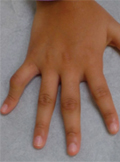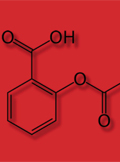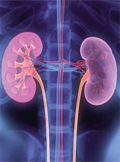The eLitMed.hu medical portal uses computer cookies for convenient operation. Detailed information can be found in the Cookie-policy.
Lege Artis Medicinae - 2018;28(10)
Content
[Juvenile idiopathic arthritis: from diagnosis to treatment]
[Juvenile idiopathic arthritis is a heterogeneous group of diseases that is one of the most common chronic diseases of childhood. It begins before 16 years of age, the etiology is unknown, it is persisting for at least 6 weeks and other pathologic conditions could be excluded. Juvenile idiopathic arthritis includes several diseases categories, each of them have distinct methods of presentation, clinical symptoms, pathogenesis and treatment options. Recent advances in the understanding of the immunological pathogenesis of the diseases have led to dramatic improvements in treatment. Although the management is using a multidisciplinary approach, the disease often persist into adulthood and can cause significant long-term morbidity and physical disability. Our article discusses the classification, clinical manifestations, differential diagnosis, treatment and complications of juvenile idiopathic arthritis. ]
[Gene modified T cells against cancer]
[Chimeric antigen receptor modified (CAR) T cells are hailed as a revolutionary breakthrough in the field of oncology. CAR T cells were first applied, with outstanding success, in the treatment of various leukaemias, yielding unprecedented antitumor activity and long periods of disease free survival. Following the success of CAR T cell therapy in leukaemias, solid tumors should now be targeted. These are more complex targets, therefore CAR T cell therapy needs to be further optimized for this purpose. Also, some unfortunate side effects, including the potentially deadly global inflammation called cytokine storm have to be minimized and possibly even eradicated. The next decade will be an exciting time to define whether this therapy which is yet exclusively used for cancer patients is also successful in the treatment of other diseases. In a recent study, T cells reengineered with CAR derived chimeric autoantibody receptors (CAAR) efficiently prevented disease progression in pre-clinical animal models simulating the serious autoimmune disorder, pemphigus vulgaris. Therapy was based on CAAR constructs which have the unique ability to selectively recognize and eliminate the B-cell clones secreting autoantibodies against a self-protein, thus playing a key role in disease pathogenesis and progression. In this review, we would like to give an overview about the history of the CAR T-cell concept, summarize briefly the currently running clinical trials, and discuss the challenges and future prospects of CAR T-cell therapy.]
[Acetylsalicylic acid (ASA) 75 or 100 mg? ]
[The acetylsalicylic acid (ASA) is one of the oldest and most widely used drugs in the world. Currently, it is the most commonly used for the treatment and prophylaxis of cardiovascular diseases. Today, there has been consensus that the risk of ASA’s side effects in primary prevention is greater than the expected benefits. However, it maintains its leading role in the secondary prevention of cardiovascular diseases. There is also a consensus that small doses are recommended for preventive purposes, but there is no agreement whether it should be 75 or 81 or 100 mg. The authors summarize the publications published in this topic. ]
[Does venous congestion decrease renal function - fiction or real?]
[Venous congestion can result in dysfunction of several organs. Although experimental data on renal dysfunction caused by venous congestion were already published about 90 years ago, those were difficult to extrapolate to humans, due to significant interracial differences. Acute pre-renal, or volume-sensitive kidney injury might respond to volume replacement; however, overt fluid resuscitation with or without right ventricular dysfunction can result in elevated central venous pressure. The glomerular capillary blood pressure, i. e. net filtration pressure in a single glomerulus is about 10 mmHg. Kidney dysfunction can both increase intra-abdominal pressure or elevate central venous pressure with or without decreased mean arterial pressure, can lead to renal dysfunction. In studies among patients with heart failure, or after cardiac or abdominal surgery, the increase of central venous pressure or intra-abdominal pressure above 8 mmHg resulted in impaired kidney function. This review summarizes both pre-clinical and clinical data on the role of intra-abdominal hypertension and venous congestion in the development of acute kidney injury.]
[Hormesis: the importance of small doses in the modern medicine]
[The hormesis concept contains that high doses of some substances are harmful (toxic or inhibiting), at the same time small doses of these substances are adventageous and stimulating. The pretreatment with small doses helps to neutralize the later harmful or deleterious effects of large doses and this has therapeutical (clinical) importance in case of numerous diseases and treatments. The review use two examples for demonstrating the importance of hormesis: the effect of radiation and the effect to immunity, in addition general, evolutionary aspects are also highlighted. The importance of evolutionary aspects are discussed. It demonstrates the influence of hormesis to the human evolution and calls attention to the expected changes in human diseases (as inevitable consequences of hormesis in our chemically strongly infected world), which are transmitted to the progenies. Hormesis is a therapeutic possibility as well as a challenge for medicine, this means that it is advisable to use it in the therapy and must prepare ourselves to the challenges. ]
[On nursing in a different way - What are we talking about? ]
[Using an uncustomary approach to nursing history, authors review the intensive development process in the 1990s that resulted in the transition of nursing from an occupation to profession in Hungary. An occupation attains professional status if its practitioners have access to education and training of a considerable duration, it has independent professional organisation, an ethical code of its own and is regulated by law. The article addresses these factors discussing at length the history and development of nursing education and training in Hungary, subsequently it describes the process arching from practical nursing to the appearance of nursing science, an intrinsic part of which was the birth of a scientific nursing journal “Nővér”. The relevant and effective legislation on nursing and nursing practice is reviewed comprehensively and the efforts to establish professional nursing organisations are described. It is maintained that framework conditions had to be established as a necessary precondition for nursing to professionalise itself on its own and become a vocation highly regarded by society. ]
1.
Clinical Neuroscience
[Headache registry in Szeged: Experiences regarding to migraine patients]2.
Clinical Neuroscience
[The new target population of stroke awareness campaign: Kindergarten students ]3.
Clinical Neuroscience
Is there any difference in mortality rates of atrial fibrillation detected before or after ischemic stroke?4.
Clinical Neuroscience
Factors influencing the level of stigma in Parkinson’s disease in western Turkey5.
Clinical Neuroscience
[The effects of demographic and clinical factors on the severity of poststroke aphasia]1.
2.
Clinical Oncology
[Pancreatic cancer: ESMO Clinical Practice Guideline for diagnosis, treatment and follow-up]3.
Clinical Oncology
[Pharmacovigilance landscape – Lessons from the past and opportunities for future]4.
5.









